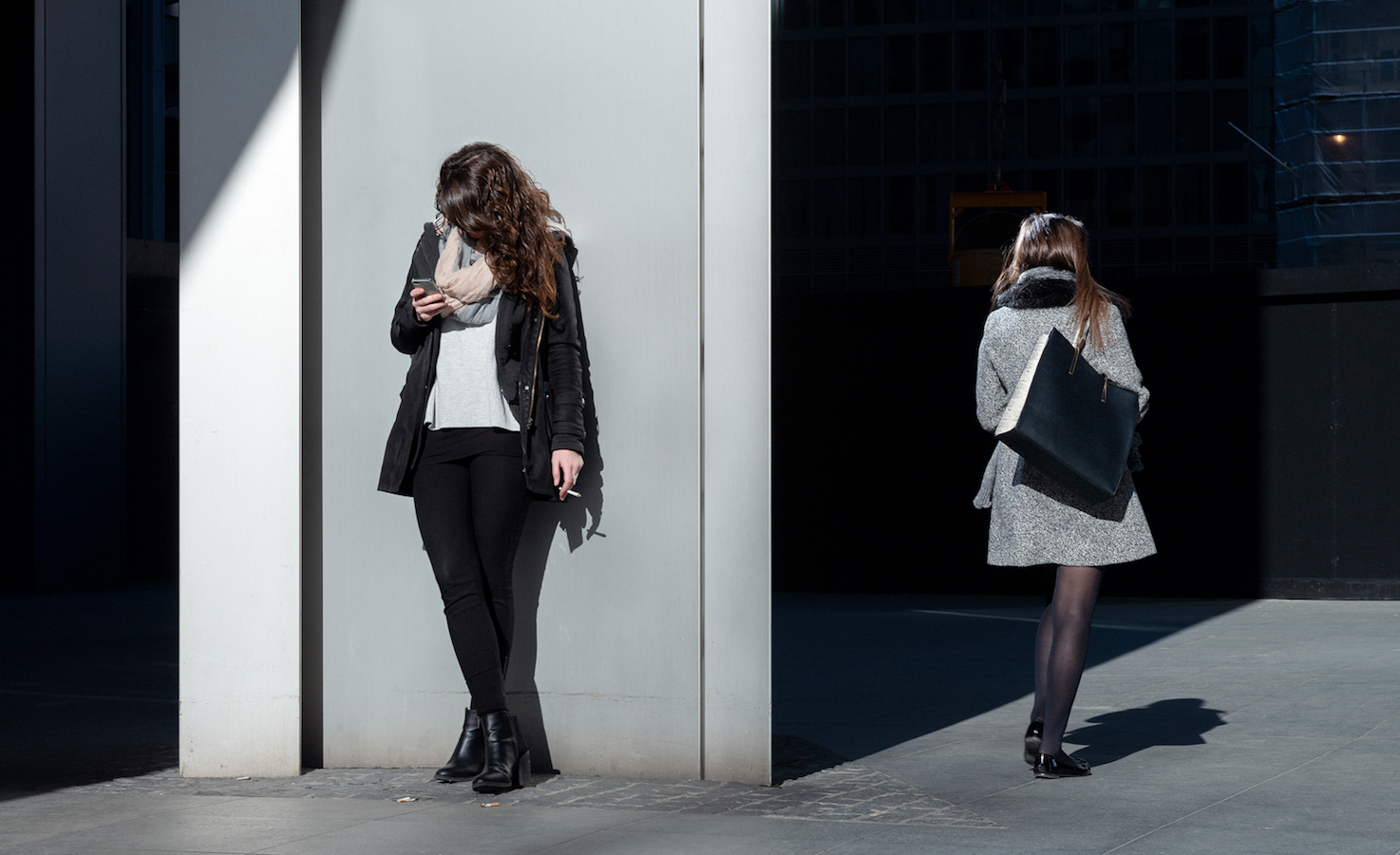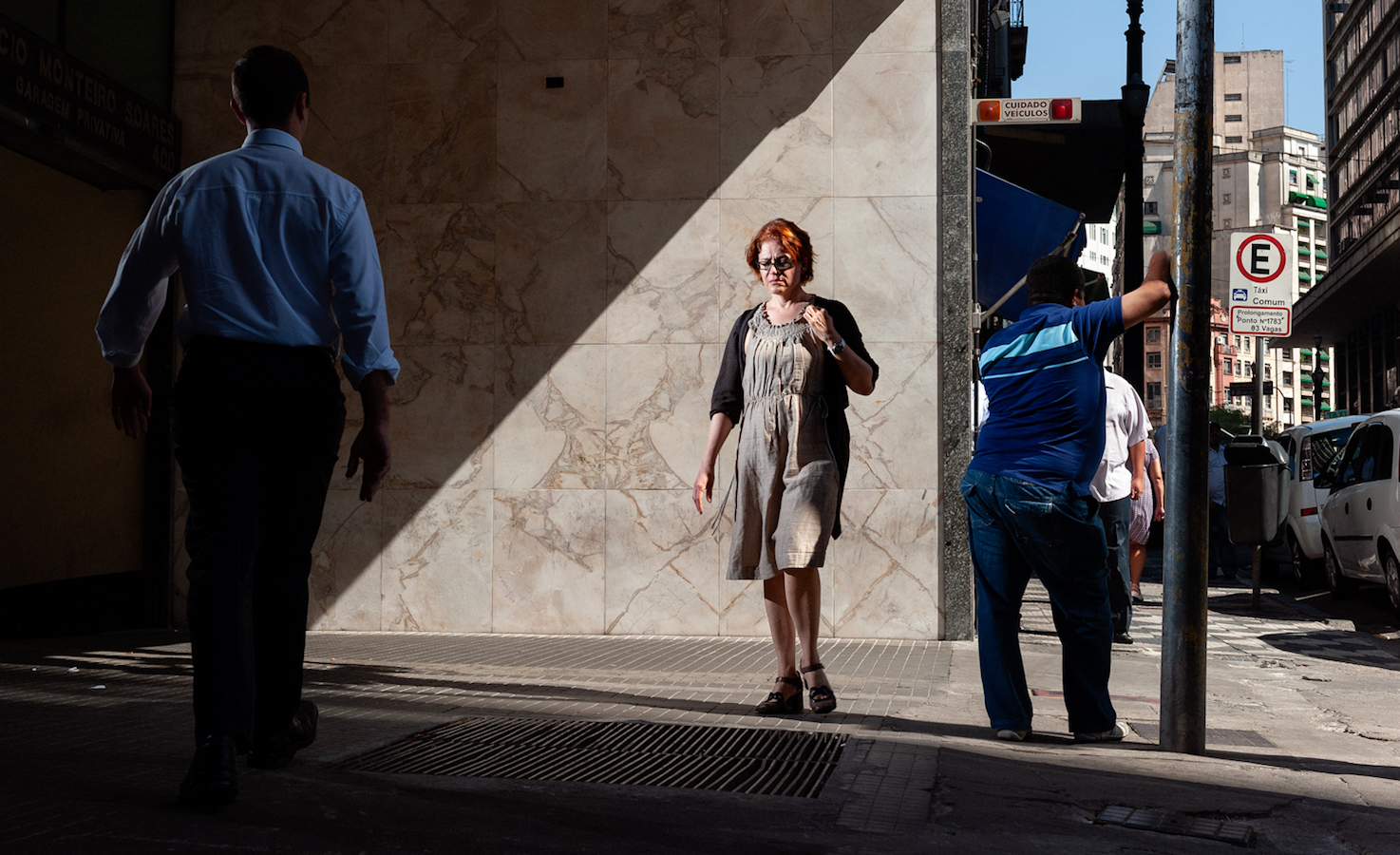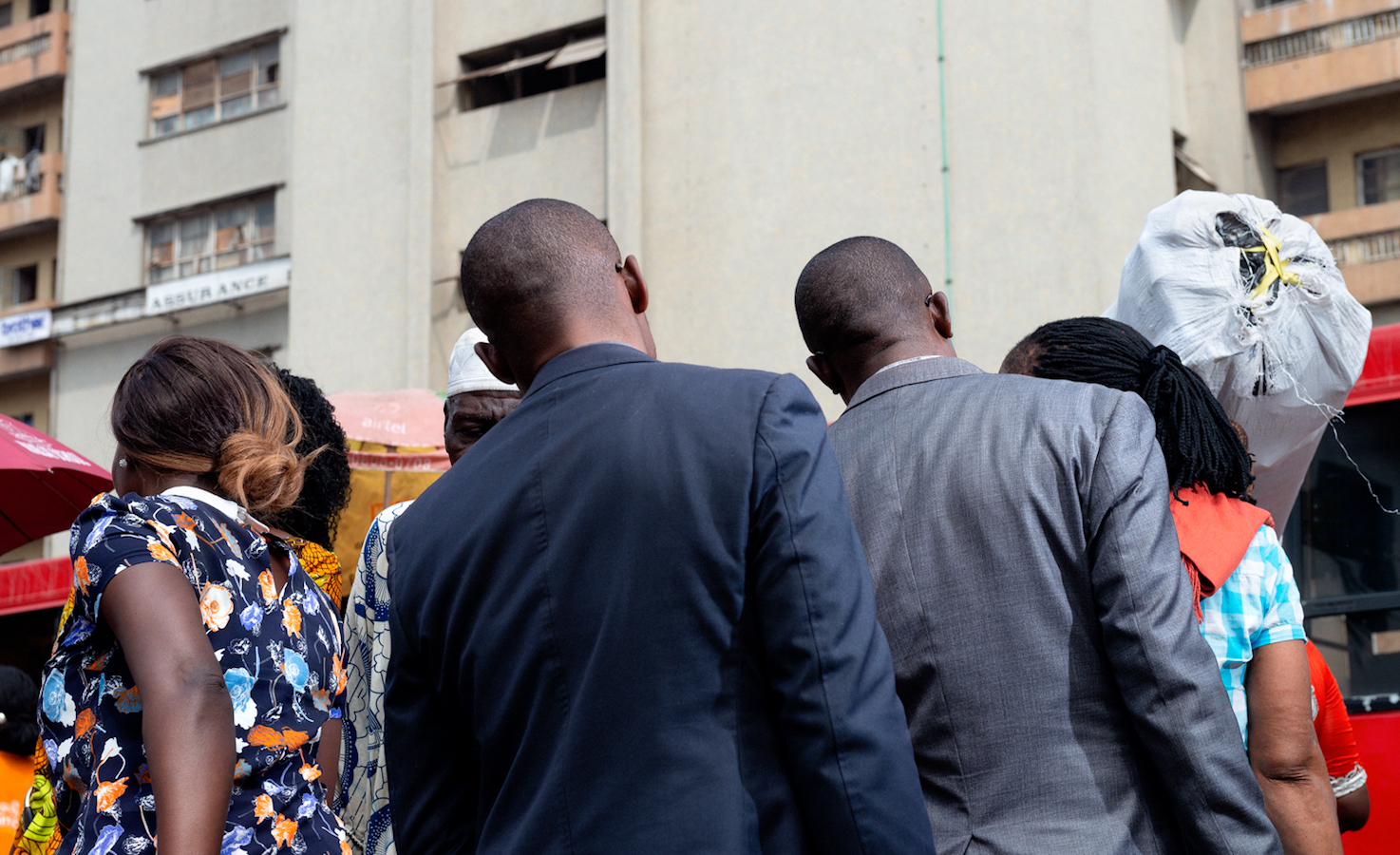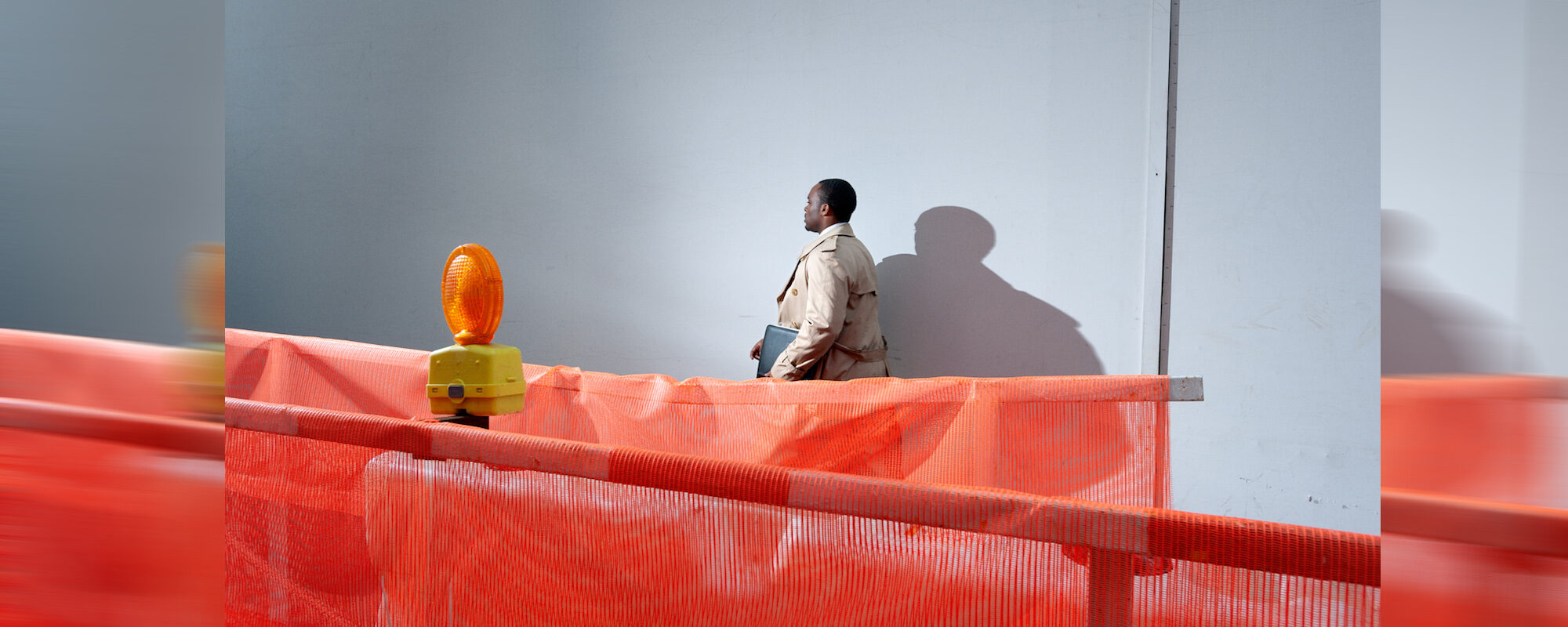Bas Losekoot’s Out of Place is a study of people meandering through urban environments. The locations that Losekoot photographed in the book are cited as Hong Kong, Sao Paolo, Lagos, Mexico City, New York and more. At first glance, the work reminds me of a number of urban image projects of a similar fashion by artists such as Phillip-Lorca diCorcia, Peter Funch, Paul Graham all who have used the city as a stage in which to make work in a similar vein. There are more historic precedents to consider with the work of Ray Metzger, Harry Callaghan, Helen Levitt and many more.
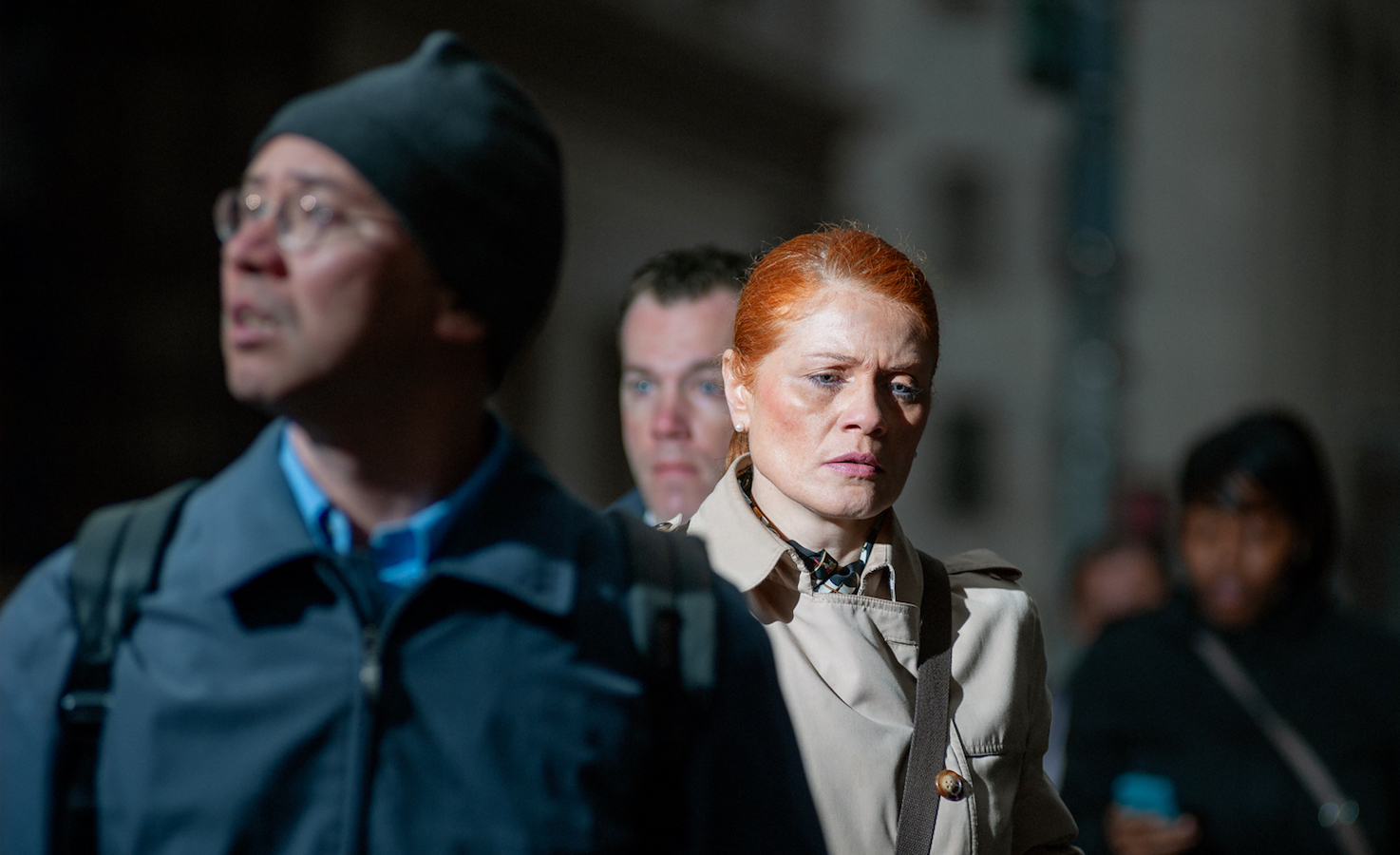
However, each artist referenced above has a very particular way in which they approach the city. With Peter Funch, though his photographs and Losekoot’s are arguably the most similar visually, they differ in their conceptual methodology. With Funch, his work was made in one place, during one hour of the day over nine years in New York. Though the stage looks similar and the way in which both Funch and Losekoot photograph up close and also pulled back in juxtaposition with an insistence on quick shutter speeds, Funch’s work is highly specific to repetition and variable nuance. He captures the same people on different days doing similar motions. Losekoot is interested more in variable images of a similar aesthetic in different places-the global signature in his work as important as Funch’s very singular placement.
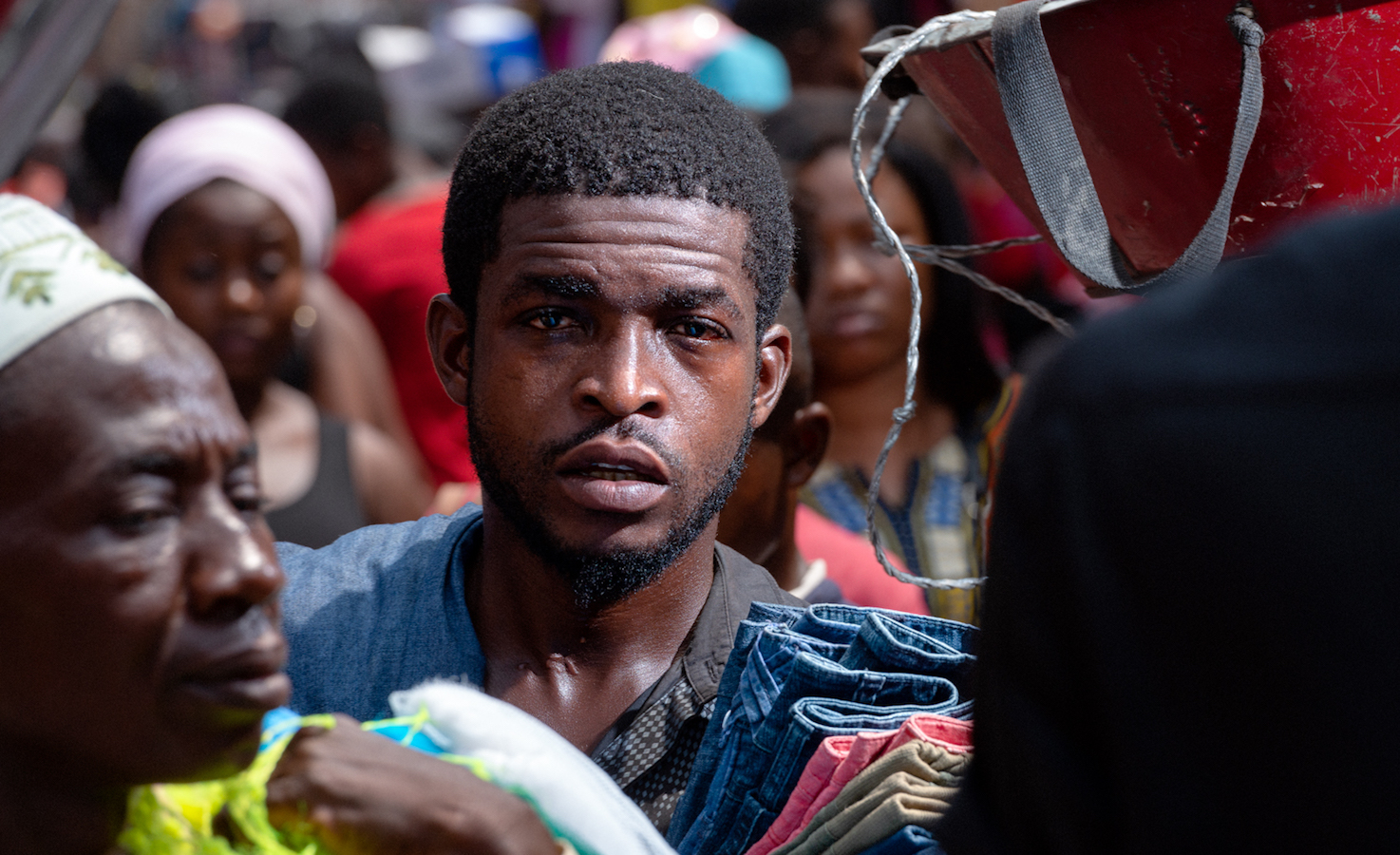
In a similar way, Paul Graham who is also invested in the moment and the ability to read an image and the time it was produced in sequence and from various angles, challenges our perception of the reading of the photographic POV. Losekoot has a similar thought process, but his way of exemplifying it is through book design with pages physically cut in a way in which they are presented as an album of multiple moments on preceding and following pages which overlap and cause second and third readings of any particular image in the sequence as opposed to Graham’s insistence on multiple frames of the same “scene”. Phillip-Lorca diCorcia is probably the artist of the three mentioned whose insistence on the street as stage aligns with Loskoot’s approach of production the most. Though Losekoot is not using artificial strobes from what I can tell, his use of natural light, high-intensity window light bounce etc. all give a highly saturated and fast capture of a singular “actor” reminiscent of di Corcia’s Heads series in particular. I would suggest Losekoot insists less on his subject than diCorcia.
